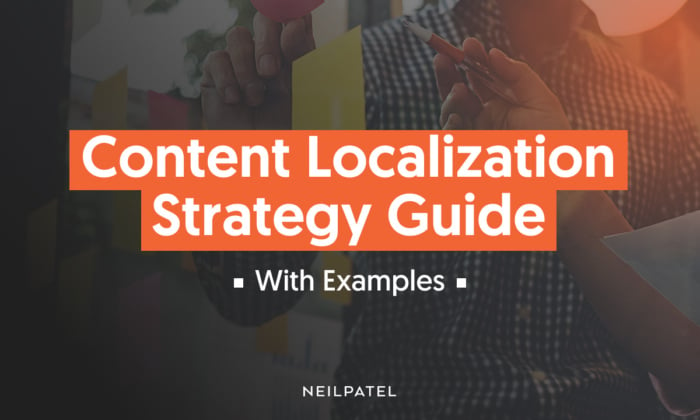
Want to know a simple truth? Failure to optimize your content for different languages and cultures means missing out on traffic.
65 percent of people prefer content in their own language, and 40 percent won’t make a purchase in other languages. People want content to feel personal to their own experiences.
And since the global language industry is growing exponentially, especially in the next few years, multicultural marketing must be a priority for organizations wanting to increase diversity in their customer base.
Expansion into new markets isn’t easy. Websites and businesses worldwide deliver awesome content, but that alone won’t be enough to drive sales through the roof. Even with amazing leads, you still need to make sure your content is accessible and easy to understand for anyone, anywhere.
Content localization makes this happen.
I’m going to walk you through what this means and how it works. Plus, we’ll check out some helpful examples of businesses that localize their content well.
What Is Content Localization?
In digital marketing, content localization means creating content dedicated to a specific region or country. This is more than just translating content into a new language. It involves finding unique ways to make content relevant based on culture and context.
When done properly, content localization will allow brands to reach out internationally for global brand recognition and expansion.
Localization vs. Translation: What’s the Difference?
The content localization process involves translation, but localization goes a bit deeper.
Translation converts words into another language and keeps the exact meaning of the original language. Content localization converts the words into what is most appropriate for that region.
Localization will often require translation, but it also means changing the text based on what people in that region expect. Otherwise, certain details may get “lost in translation.”
Let’s look at an example.
The phrase “avaler des couleuvres” is a common French expression meaning “to swallow grass snakes.” If you said, “We had them swallowing grass snakes.” to someone in American English, they would probably have no idea what you’re talking about. But in French, this expression makes sense.
This is an example of when direct translation won’t work. Instead, you have to change it to something that makes more sense for the target language, region, and demographic.
Saying “We tricked them into doing something insulting.” or “We made them believe something gullible.” would be a better way to change (“localize”) this French expression into common American English.
5 Companies That Do Well with Localizing Content
Global brands need strategies to attract local markets. How do they make a huge brand feel more like it belongs in different communities? With content localization.
Here are some excellent examples of companies that know how to localize content the right way.
1. Netflix
Netflix provides localized content based on the values and preferences of different regions. The company constantly experiments with new models and tools in set markets, and they customize options based on regional market data.
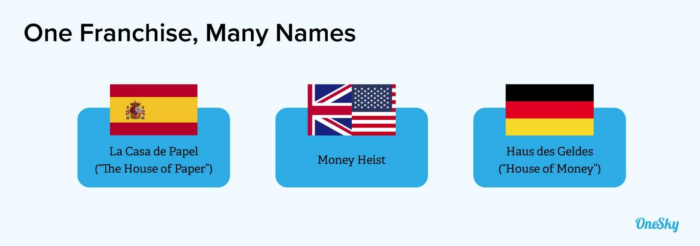
This images shows an example of this. Netflix’s show titles change based on where you are in the world.
As Netflix has expanded, it continues to hire localization professionals in different markets. This provides opportunities to:
- Partner with local brands for Netflix content.
- Invest in more diverse content offerings.
- Gather the input of local experts in different parts of the world.
2. Coca-Cola
Coca-Cola is a company that has withstood the test of time in markets around the world. It is timeless, simple, personal… these are some of the reasons it is still an industry giant today.
Because Coca-Cola knows how to brand itself (and how people react to that brand), it can localize content based on culture, language, and experience. Consistent messages related to the brand have easy translations, like “Enjoy” or “Happiness,” to make localization simple.
It’s also easy to personalize Coca-Cola; think of the “Share a Coke” campaign. It began in Australia and quickly became popular in over 70 countries.
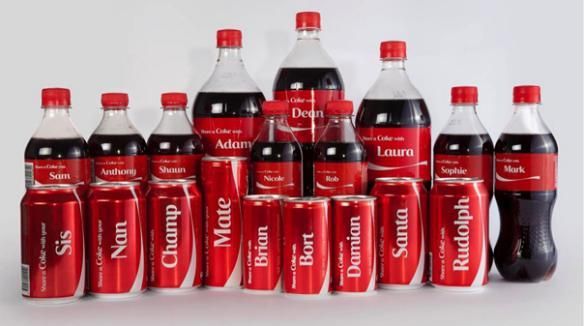
This campaign also made it easier for Coca-Cola to engage with international social media followers, enhancing the experience and adding to the personal touch Coca-Cola does so well.
3. Airbnb
Over the past few years, Airbnb has made excellent strides in localizing its content.
For starters, Airbnb displays user profiles in different content languages, making it easier for people to read and understand profiles from different parts of the world. They also have a translation button so guests or hosts can select their preferred language. As of 2019, people can now read languages like Hebrew or Arabic with right to left language support.
Given the global nature of Airbnb’s services, communication is essential amongst hosts and guests. The addition of Translation Engine, which is Airbnb’s machine translation tool, allows users to see user-generated content in their preferred language (including guest-host interactions and international SEO keywords).
Today, Airbnb partners with local organizations in different markets to enhance user experience and strives to meet every market’s needs as an online marketplace.
4. Slack
Slack originally focused on communication between teams in Canadian businesses. But it quickly realized there were many other markets that could use this type of messaging app.
When Slack decided to branch out into other countries, it localized content into set languages, applied local time zones, and updated to local currencies.
Anyone who has used Slack recognizes the playful tone it displays to appeal to all of its diverse users in a more “human” way. But, because different phrases may not mean the same thing in each region, Slack adapts and updates based on user location as part of its localization process.
Here’s an example:
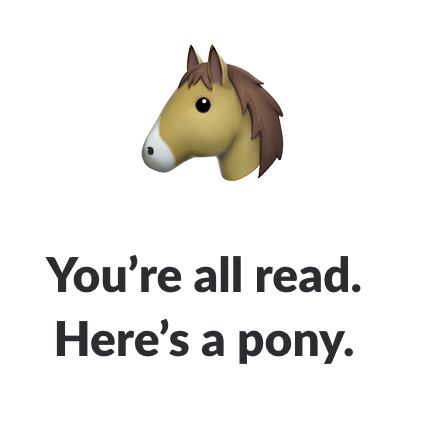
5. Apple
Apple has one of the most recognizable logos in the world. And for good reason. Consistent branding and localized messaging.
When people think of Apple, they often think of their famous logo or one of their devices. And since Apple devices are so easily recognizable anywhere in the world, this leans into the consistency of their brand and aesthetic.
Consistency makes localization easier.

Simply put, you don’t have to change much to localize their products because they look familiar everywhere in the world. If someone sees a photo of an iPhone or a person using a Mac, they know exactly what that brand is. This means when Apple operates in other countries, it can rely on its logo more heavily.
Apple’s message on its website or in its stores also changes based on location. For instance, Apple has over 100 different versions of its website based on a person’s country, tailoring information and experience to their local region. This creates a more intimate, unique experience for the user, no matter where they are.
When Should You Begin to Localize Your Content? (Hint: as Soon as Possible)
Content is one of those things that seriously impact first impressions.
Think about it. If you visit a site and see the content isn’t right for you, do you stick around? No, you leave to find something better suited to what you were looking for.
This is why you should think about localizing your content as soon as you can.
Here’s How to Develop a Content Localization Strategy in 3 Steps
Even if your company isn’t ready to expand into international markets yet, it may be eventually. And when that happens, you’ll want to be ready.
This doesn’t mean you want to dive in deep right away. Localizing content can take a lot of resources and time. Luckily, I have some tips on how to develop a content localization strategy without overdoing it right from the start.
1. Find Where You Want to Market
The first thing to do is figure out where you want to market and gather information. Market research will tell you a lot about where your business will find success (and where it won’t).
Think about which regions have a demand for your products or services. If possible, consult with local experts in the area to see if your offerings are right for that demographic.
By performing keyword research, you can easily get information on search volumes for terms related to your products and services in different areas of the world.
You can also use analytics to see if there are untapped markets already visiting your website. Consider the following:
- Where is your website’s traffic coming from geographically?
- How many people from other regions make a purchase?
- Is it possible for people from other regions to make a purchase?
- How much time do visitors from other countries spend on the website?
Remember to expand slowly and start with only a few new locations at a time. You can always scale up your efforts later.
2. Learn About the Types of Content You Can Localize
Once you know your target, you can look at the content you want to localize. The best thing to do is start with your content that is most popular.
You may be wondering, “What type of content can I localize?” The answer is basically anything. Making content presents a way to communicate a message, so localizing content is just about changing the message so that it makes sense to the new audience.
Since it’s easier to localize existing content rather than focus on international or local content creation, you can use what you already have to expand to new audiences.
For better understanding, here are some examples of pages you should localize to enhance customer experience if you’re localizing a whole website:
- Landing pages
- About us pages
- Contact pages
- Shipping or pricing information
- Product pages (and descriptions)
- Videos or webinars (don’t forget subtitles!)
- Instruction manuals
- FAQs
- Terms of service pages
- Legal pages
- Privacy policies
- Emails and newsletters
This may seem like a lot, but remember, you don’t have to localize your entire website right away!
Start off with your most popular content (like blog posts, videos, or even FAQs) and always track performance as you go with tools like Ubersuggest for international SEO.
3. Find the Right Localization Tools to Help You
There are a lot of translation and localization tools out there, so you must select the ones which make the most sense for your needs.
Are you tempted to go for the free translation tools? Although Google Translate is great for translating simple words and phrases on the fly, it’s prone to errors. Errors = not what we want.
Instead, hire a professional who has experience with the culture and language of your target market. Language service providers will help you locate skilled translators who make localizing your content much faster (and more accurate). Using copywriting skills, you can also update this content as necessary to make it brand-appropriate and action-oriented.
Past that, there are tools to use in order to keep your localized content current, like translation management systems.
Don’t Forget These Important Factors
Want to make sure your content doesn’t flop after localization? Pay attention to these tips.
Watch for Spelling (and Use the Local Language)
The words “favorite” and “favourite” mean the exact same thing, but what’s the difference? Spelling.
When most people see spelling discrepancies like this, they may think the content wasn’t made for them and bounce. That’s not what we want.
Readers will have alarm bells ringing if they notice the language or spelling you use doesn’t make sense for their region. Localized content should feel “local.”
Understand What Is Culturally Appropriate and Inappropriate
Remember the Pepsi commercial with Kendall Jenner?
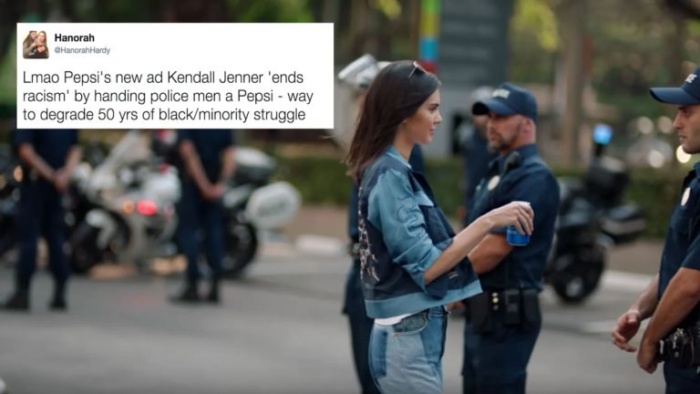
The backlash from this ad makes it clear that being appropriate and understanding your market is of the utmost importance. Once you’ve identified your target audience, it’s time to research their culture, history, and current events.
If you use emojis in your content, keep in mind that cultures use emojis differently.
Understand what is and what is not appropriate before you start localizing content to avoid an offensive mistake.
Know Common Phrases
This goes back to using local language, but it goes deeper.
Some phrases, like cliches, slang, or idioms, may seem out of place for the intended audience. Not only does this create a distraction for the reader, but it also causes confusion.
Simply put, make sure people can understand everything you’re trying to say without having to think too hard (or Google a phrase they’ve never heard).
Use common phrases most people in that area would recognize.
Use Proper Images to Show the Local People and Area
You’ll miss a chance to connect with your audience if you don’t change your images during the localization process. But it can be a huge misstep to choose images with different meanings than you think.
Select images based on what you know is culturally acceptable in the region. Consider different meanings behind symbols, colors, and gestures. Another way to connect with your new audience? Use images featuring people who represent the country’s population.
When all else fails, universal symbols (like geometric shapes) are an easily understood way to add imagery to your content.
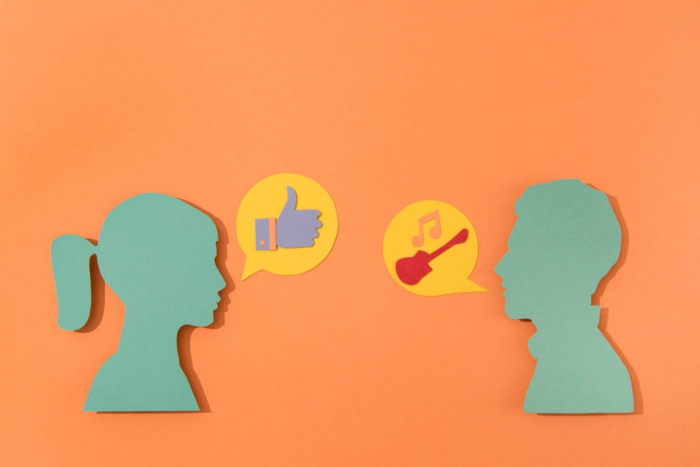
Frequently Asked Questions
Apple provides more than 100 versions of its website based on a user’s location. This ensures Apple’s imagery and messaging are tailored to the user’s country or local region. Other simple examples of content localization include updating z’s to s’s for British English or changing prices on a website based on local currencies. Localization includes making any changes necessary to match content to the language and culture of a specific region.
Depending on the complexity and type of localization activity, localization looks different in its various forms. Examples of localization types include software, apps, websites, or even video games. Full localization for each of these creations is possible, but it looks different based on the platform and required updates to the language or interface.
First, you’ll want to discover and document where you want to market by consulting local experts about demand for your product or service. You can also perform keyword research and dig into you’re your website’s analytics to see if there are untapped markets already interacting with your site. Second, you’ll want to choose the right content to localize. Start by looking at the most popular content on your website and localize those pages first. Third, you’ll want to source localization tools that can help streamline your efforts. Test free translation tools like Google Translate, check out professional language service providers, and explore translation management tools that can help keep your content updated.
Conclusion
Localized content is essential if you want to grab new customers’ attention and entice them to make purchases. Content should be built around a personalized experience so you can easily guide customers through the buying cycle (no matter where they live).
And you really can’t rely on other marketing tactics alone to make this happen. For instance, local SEO is important to increase your business’s visibility on local search results, but if you don’t make the content feel personal and local, your local SEO attempts won’t make sense. People will be able to tell the content isn’t “for them.”
If you’re hoping to expand to new international markets, developing a strategy for content localization is a great place to start.
Every customer experiences life differently, and they see the world in a unique way as a result. Humanize your brand by localizing to convert.
Have you tried localizing content for your business? If so, what was the result?

See How My Agency Can Drive More Traffic to Your Website
- SEO - unlock more SEO traffic. See real results.
- Content Marketing - our team creates epic content that will get shared, get links, and attract traffic.
- Paid Media - effective paid strategies with clear ROI.
Are You Using Google Ads? Try Our FREE Ads Grader!
Stop wasting money and unlock the hidden potential of your advertising.
- Discover the power of intentional advertising.
- Reach your ideal target audience.
- Maximize ad spend efficiency.

